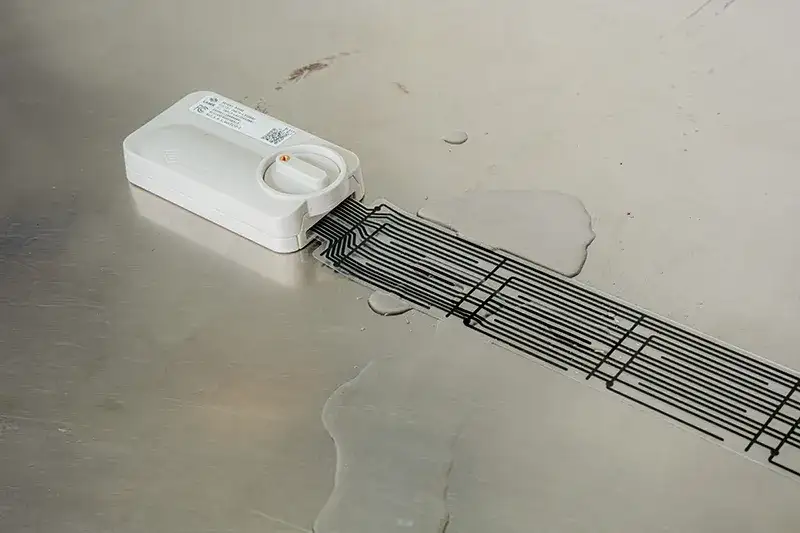Detecting Washing Machine Leaks
When washer-dryers leak, damage and downtime ranges from damaged flooring and tenant inconvenience; to multi-unit damage and unsightly staining on floors, walls or ceilings; to sick building syndrome, and structural damage due to long-standing escape of water.
Discover why washing machines leak water, and key attributes of effective water leak detection solutions that mitigate damage and downtime.
What causes washing machines to leak water?
1. Incorrect or improper installation
-
Washing machines must be installed on a level surface to help reduce unnecessary wear and tear and prevent water leaks. The internal pressure created when it spins clothes can cause the machine to move and tilt slightly. This shift in angle causes a gap between where the drums meet, and may result in water leaking out from that area.
-
An improperly positioned drain hose, or loose connections at both the drain hose and water inlet will cause water to leak.
2. Less-than-careful tenant use
-
Overloading a washer-dryer is a common error that can cause water to spill out of the drum, or compromise the door seal.
-
Adding too much laundry detergent - or the wrong kind - can cause suds to overflow and leak from the washing machine.
-
Not cleaning lint filters regularly leads to them clogging, which causes water to back up and leak.
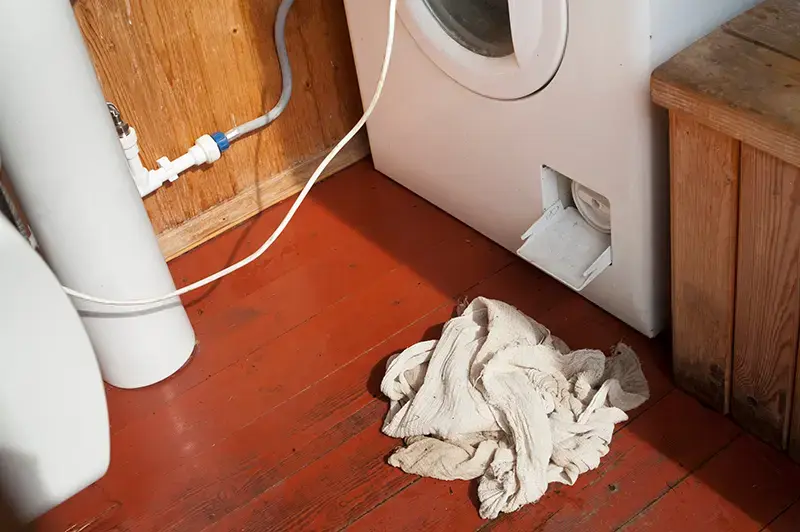
3. Operational wear and tear, and missing scheduled maintenance
-
Hoses that supply water to the washer, and from the washer to the drain, will develop cracks or splits over time, allowing water to leak.
-
Impact and wear can cause the washing machine's tub to crack and leak water.
-
Water inlet valves may malfunction, causing water to leak during filling.
-
Drain pumps that are malfunctioning or clogged by debris may fail to remove water effectively, causing leaks.
-
The seal around the washing machine drum can wear out over time, causing leaks.
-
In front-loading washing machines, a worn or torn door seal will allow water to escape.
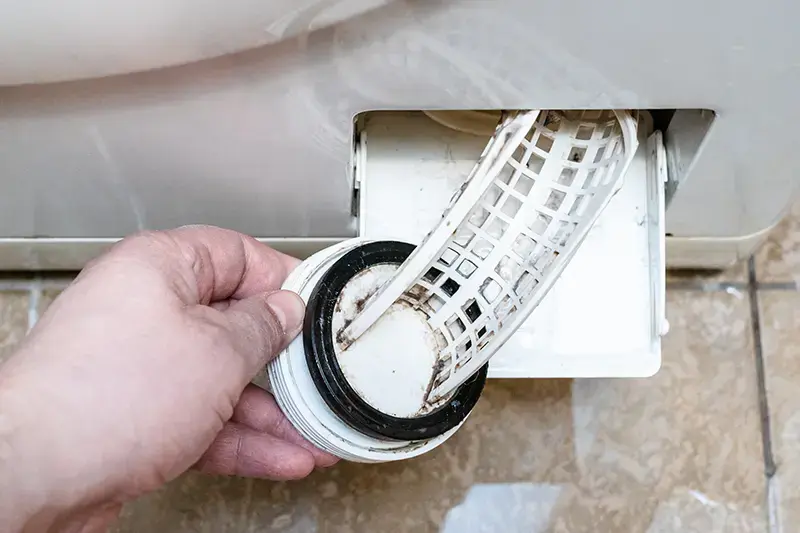
What happens when a washing machine leaks?
Water escapes
-
In most cases, water leaks occur under or behind the washer. Leaks tend to start small, with water pooling underneath the machine.
Damage occurs
-
Water pools and will begin to be absorbed by porous floor coverings. Over time, they will begin to discolor and warp as they absorb more moisture.
-
If there are holes in the floor or in the adjacent wall, water may escape further in the affected area, as well as into hidden areas of the building's infrastructure.
-
As time passes, mold and mildew will begin to form, and a smell may start to develop.
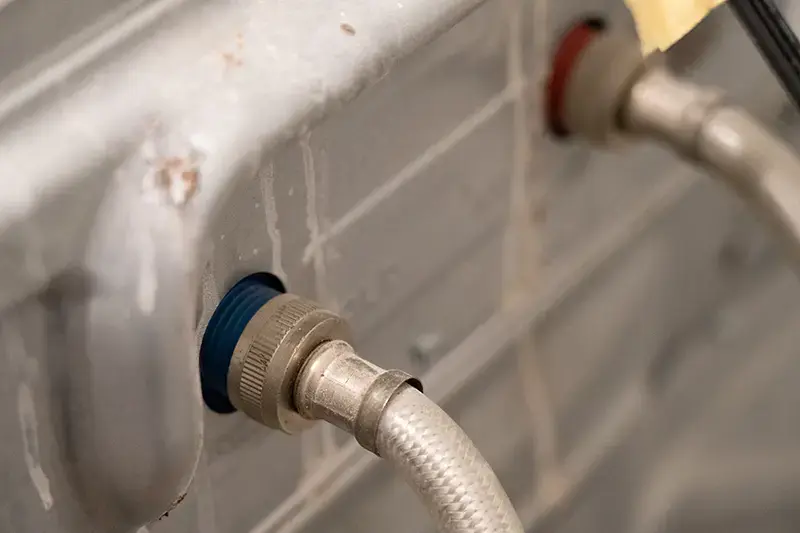
Damage escalates
As damage escalates, so will downtime:
-
Porous floor coverings and drywall will become saturated, and water will escape further. If the leak has been small, it is at this point that localized flooding may occur - finally creating visible evidence that there is a leak.
-
Mold and mildew will continue to grow unchecked in damp areas, affecting air quality and thus tenant and/ or employee health. "Sick building syndrome" may be diagnosed in more severe instances, requiring tenants to cease occupation until cleanup has been completed.
-
Longer-running leaks may have a negative impact on structural elements of the building, requiring more comprehensive repairs.
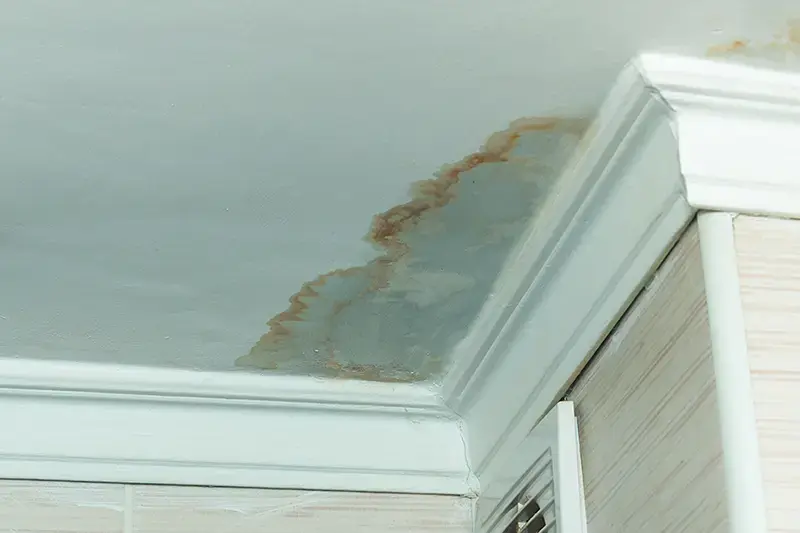
Washer-dryer leaks are poorly served by traditional water leak detectors
Detecting water leaks from washer-dryers in commercial building infrastructure
-
Tenant reporting should be the most reliable method of water leak detection - but few tenants actually report leaks.
-
Manual inspection is a less common method of water leak detection, as it is considered to be intrusive. And even if it wasn't, it's time-consuming and prone to human error.
-
Puck sensors only cover a very limited area. This means that a significant volume of water has to pool in just the right spot for a leak to be detected.
-
Rope sensors are less reliable due to their high false positive rates. As experienced facilities teams know, dust and stray drops of water are common under washing machines, which means high false positive rates.
-
Flow meters are great at detecting substantial differences in pressure, but tend to overlook washing machine leaks due to their size. They're also unable to pinpoint exactly where in the network the water is leaking.
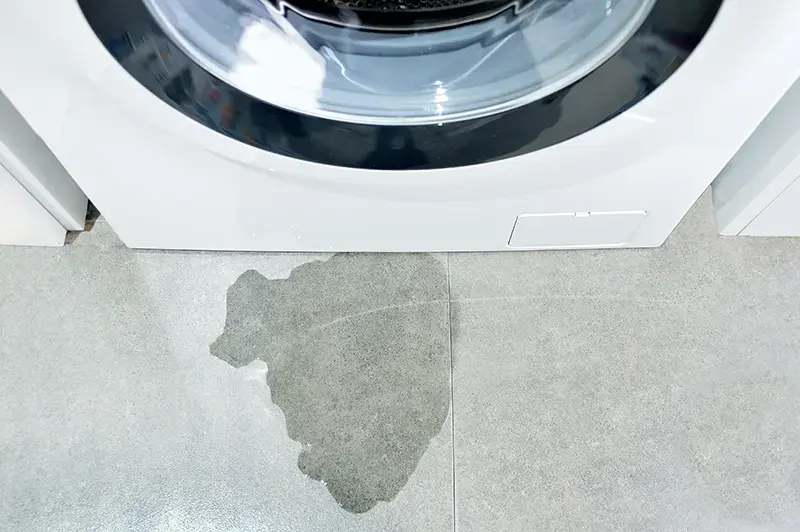
Effective water leak detection for washing machines requires comprehensive capabilities
-
To provide accurate information on the leak size, rate, and its location to facilities teams without relying on tenants. This enables facilities managers to prioritize investigation and repair according to urgency, potential damage, and the impact of any necessary downtime.
-
To avoid reporting false positives that mean unnecessary interruptions for tenants, while also being able to detect leaks early enough to avoid significant damage and downtime being caused.
-
Fast, simple installation that doesn't overburden already-stretched facilities teams, and requires little to no maintenance once complete.
-
To provide aggregated data to facilitate improved decision-making across facilities.
How LAIIER’s Severn WLD detects water leaks from washing machines
Severn WLD™ automatically monitors and detects water leaks from washer-dryers in commercial settings
- Before tenants are even aware of a leak, building and facilities managers automatically receive emergency alerts, clearly identifying the specific washing machine and location where water is pooling. Further data can be reviewed to determine leak size and growth, making it easier to prioritize repairs.
- Quick, tool-free, self-adhesive installation minimizes setup effort - it's easily retrofittable, so washers don't need to be movedfor installation.
- Each device remains in place until you decide to move it. With a 6-year battery life, devices are maintenance-free, even after a leak occurs.
- Water leaks can be reliably detected in the early stages, without tenant reporting, manual inspections, or visible signs of damage.
- Severn WLD's robustness and IP65 rating make it suitable for use in multifamily settings, as well as more rugged commercial and industrial settings. And the same water leak detection device can serve multiple use cases, both in buildings and in industrial applications.
Explore the benefits of early water leak detection
Book a call with our team for a confidential discussion about detecting water leaks from washing machines.
